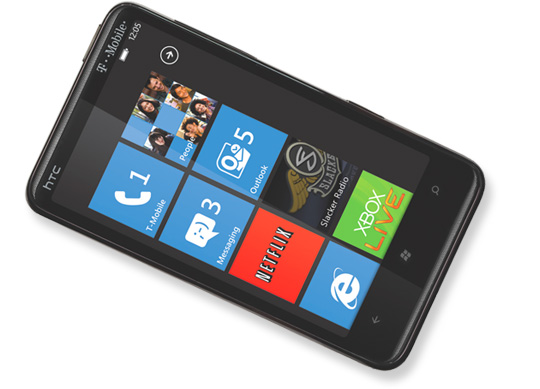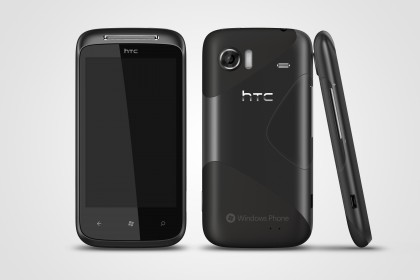Hands on with five Windows Phone 7 launch handsets from Samsung, LG, HTC
Full of win?

I’m going to do a very bad thing for this hands on, and have Microsoft Word’s thesaurus open next to me throughout.
It’s not that I’m striving to express my joy at the new mobile OS from one of the largest software makers in the world, but more that I’m wary that I may use the word ‘same’ a little too often.
Don’t get me wrong – the new OS is a bold move by the traditionally reserved company - a company that spent the last few iterations of the Windows Mobile platform desperately trying to force every bit of the Windows desktop into a smaller device, no matter how badly it impacted on performance or usability.
With Windows Phone 7, Microsoft is hoping to break out and form a widget-heavy ‘tile’ interface that relies on constant updating of information, cutting down on the time spent navigating through menus.
It’s also imposing a set of rules on manufacturers so that fragmentation like that seen on Android is avoided as much as possible.
The problem, though, is that a lot of the handsets shown at the London presentation ended up feeling, well, quite similar – especially if you’ve used the various phone-makers’ other recent flagship devices like the Galaxy S or Desire.
Nevertheless, even with the similarities it was interesting to see how the different manufacturers have approached this latest mobile OS – some in more overtly diverse ways than others.
Please note: The Dell Venue Pro, with its QWERTY slide-out keyboard, wasn’t presented at the event, so disappointingly we can’t reveal how that device performs.
All contract prices listed are the price for a free handset, and last for two years.
HTC HD7 (O2 - £40 p/month)
The big daddy of the WP7 handsets, the HD7 is the HD2/Evo in all but name. The huge 4.3-inch screen stands out against all the other handsets on the list, and the inclusion of a metal kickstand on the back gives it an almost tablet-y feel.
This is one huge phone – and won’t fit easily into some terrible skinny jeans – but on the flip-side it is surprisingly light given its size, weighing in at 162g, and it doesn’t feel uncomfortable to hold.
It’s disappointing that the camera is just a 5MP, especially given that the Evo ranks in at 8MP, but those looking to upgrade from the HD2 who want something familiar will be delighted with the HD7.
HTC Mozart & 7 Trophy (Orange – £35 p/month; Vodafone - £25 p/month)
The HTC Mozart and 7 Trophy are the two smaller brothers of the HD7, bearing a striking resemblance to the Legend and Desire respectively. Whereas I struggled to understand how anyone could fit a HD7 in their pocket, the two smaller devices felt more like traditional phones.
The Mozart is the prime HTC release in my opinion, coming with the best camera of the lot (8MP), smaller unibody construction (just 3.7 inches – easy to fit in the pocket), and that familiar HTC curved design with a very ‘Legend’ look to the back.
On the other hand, the 7 Trophy is ever-so-slightly bigger at 3.8 inches, and lacks the unibody construction of its smaller cousin, making it feel a little plasticy to the touch. It really is the Desire and Legend comparisons all over again, only this time with a different OS (and equal power).
LG Optimus 7 (Vodafone - £30 p/month)
The Optimus was possibly the most surprising of the handsets on display at the event. Not because it was radically different to the others – the interface is, understandably, similar – but because it's so gosh-darn heavy. It feels more like a weapon than a phone.
Having said that, the Optimus 7 also feels a lot more robust than the others in the line, helped by the strangely block-like shape that seems to partially contribute to the ‘heft’ (in my mind). The edges are curved at the bottom, so you won’t cut your hands on it, but they're hardly Mozart.
The other surprise lurks under the hood, as the Optimus 7 is the only one of the launch line-up to pack DLNA (Digital Living Network Alliance) support, which, when synched up to a compatible TV, can instantly deliver video from the device without faffing around with HDMI leads.
It looks to be well integrated into the interface, running as a tile, but Vodafone had plastered a ton of its own tiles around and coloured the UI red, which makes it strangely ugly and a little confusing.
Samsung Omnia 7 (Three, T-Mobile, Orange – £40, £35, £35 p/month)
Samsung’s Omnia 7 measures in between the Wave and Galaxy S handsets, sharing the same back and light metal/plastic finish as the bada and Android phones.
It’s the only handset to come with a 4-inch Super-AMOLED display, which will no doubt mean it’ll be in short supply at release if the company’s previous track record is to be believed.
The Samsung device is the most strikingly different from the other phones in that it uses an indented Home button, giving the front more of a physical touch than the standard ‘slippery glass buttons’ that feel more like extensions of the touchscreen.
It’s also interesting to note that Samsung’s excellent camera software (with white balance and scene selection among others) has also been tailored to the new OS, although the 5MP camera is, for all intents and purposes, exactly the same as that found in the Android and bada models.
